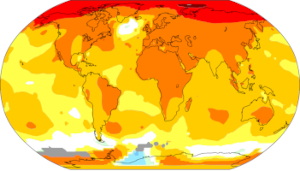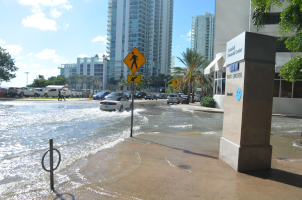 `
`
The global average temperature is currently on track to reach 1.5 °C above pre-industrial levels by midcentury. This is already leading to impacts such as more frequent and intense storms, droughts, and heat waves. The impacts on humans include losses from flooding, decreased crop yields, and heat stress. Every ecosystem will be negatively impacted. This includes the oceans and the human activity they support.
At the same time, oceans coastal ecosystems can plan a strong role in the mitigation of global greenhouse gas emissions. The oceans and their ecosystems serve as carbon sinks, sequestering vast amounts of carbon dioxide. That’s the promise of Blue Carbon. At the same time, when these ecosystems are damaged, they can emit carbon dioxide and methane which leads to acceleration of climate change.
Because climate plays such a large role in the research of the Center for the Blue Economy, the National Ocean Economics program has begun to collect and organize data related to climate change and its impacts on the world’s oceans.
Sea Level Rise:
One impact of climate change is rising water levels in seas and oceans. If current warming trends continue, we can expect to see, at a minimum, a one foot increase in global sea level by the middle of the century. However, the water will rise unevenly across the world due to local conditions and geography. Much the work we do involves estimate the local effects of sea level rise on coastal communities. In the coming months, the NOEP will release data sets which track the economic impacts due to Sea Level Rise.

 `
`